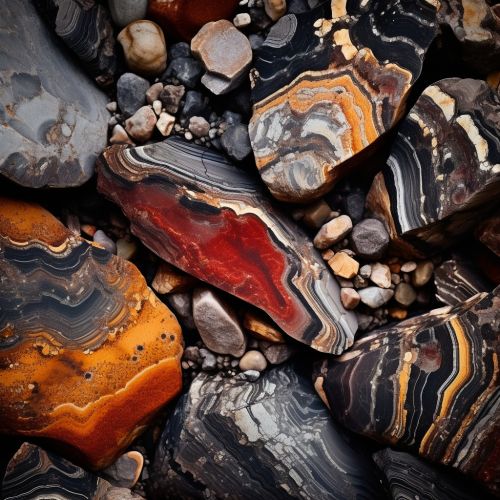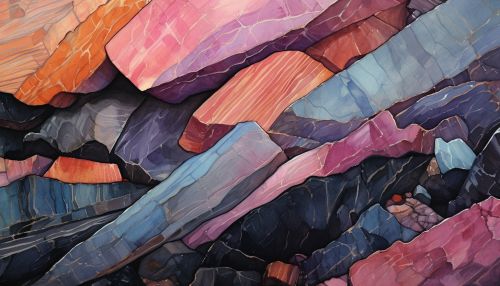Metamorphism
Introduction
Metamorphism is the change of minerals or geologic texture (distinct arrangement of minerals) in pre-existing rocks (protoliths), without the protolith melting into liquid magma (a process called melting). The change occurs primarily due to heat, pressure, and the introduction of chemically active fluids. The chemical components and crystal structures of the minerals making up the rock may change even though the rock remains a solid. Changes at or just beneath Earth's surface due to weathering and/or diagenesis are not classified as metamorphism.
Types of Metamorphism
There are two main types of metamorphism: contact (or thermal) metamorphism and regional metamorphism.
Contact Metamorphism
Contact metamorphism occurs typically around intrusive igneous rocks as a result of the temperature increase caused by the intrusion of magma into cooler country rock. The area surrounding the intrusion where the contact metamorphism effects are present is called the Metamorphic aureole. Aureoles may show all degrees of metamorphism from the contact area to unmetamorphosed (unchanged) country rock some distance away.
Regional Metamorphism
Regional metamorphism is metamorphism that occurs over broad areas of the crust. Most regionally metamorphosed rocks are located in the orogenic belts (mountain ranges) that have formed by the collision of continents.
Metamorphic Processes
Metamorphism is a complex process that involves a variety of geologic processes, including recrystallization, neomorphism, and metasomatism.
Recrystallization
Recrystallization is a metamorphic process that changes the shape and size of grains without changing the identity of the mineral. This process often results in a more compact rock with denser grains.
Neomorphism
Neomorphism involves the change in mineral composition and can result in the formation of new minerals. This process is often associated with the introduction of chemically active fluids.
Metasomatism
Metasomatism is the drastic change in the bulk chemical composition of a rock that often occurs during the processes of metamorphism. It is due to the introduction of chemicals from other surrounding rocks. Water is the most important agent in metasomatism.
Metamorphic Facies
A Metamorphic facies is a set of mineral assemblages in metamorphic rocks formed under similar pressures and temperatures. The assemblage is typical of what is formed in conditions corresponding to an area on the two dimensional graph of temperature vs. pressure.
Metamorphic Grade
Metamorphic grade is a scale of metamorphic intensity which uses indicator minerals to gauge the peak conditions of metamorphism.
Metamorphic Textures
Metamorphic textures include foliation, lineation, porphyroblast, poikiloblast, augen, and others.
Metamorphic Rocks
Common metamorphic rocks include slate, phyllite, schist, gneiss, and marble.
See Also


